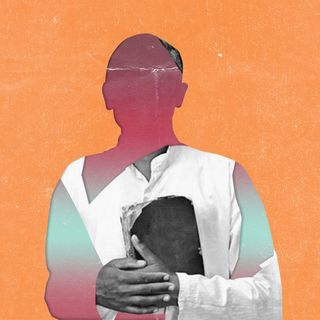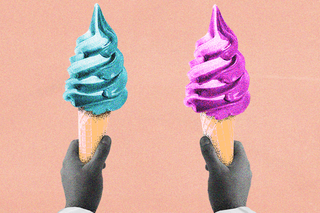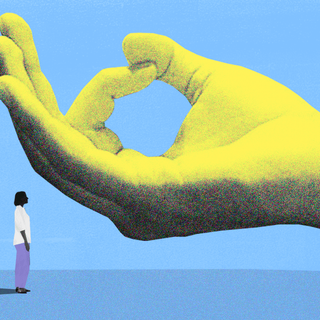
Why It Is Hard to Make Some Decisions – and Not Others
We may be doomed to dilly-dally between what is and what could have been. But sometimes, it’s best to just pick a side, and go from there.

I’m terrible at deciding what to order. Or deciding where to eat. Or which book to pick for a weekend read. These may sound like trivial dilemmas, but imagine a similar feeling of irresolution spilling into major life milestones — like deciding what career to pursue. To settle down in a job you love or pursue a challenging new arena? This categorically sounds like a “hard” decision, one which may determine the trajectory of one’s life.
But what makes some decisions easy, and others, hard? Why is it that rational thinking is needed for one category, and the gut suffices for the other?
It always helps to start with how we may be biologically programmed to find choices “hard” in general. Psychologist Susan Nolen-Hoeksema explained in her book howthe human brain is hardwired for overthinking. “Each little thought and memory we hold in our brain does not sit there isolated and independent from other thoughts. Instead, they are woven together in intricate networks of associations,” she wrote.
Humans unsurprisingly have a tendency to stick to what they know instead of going above and beyond to choose something different. It’s what experts call the “status quo bias,” where any alternative to what we already know feels tumultuous and not worth the risk in the end. Probably that’s why you’re conflicted between your usual ice cream order (good-old strawberry!) and a never-tried before blueberry ice cream cheesecake. The brain may try harder than you realize to uphold the status quo.
Then there is the anchoring bias, which means we may rely too heavily on the first piece of information we come across about a certain choice. It’s not always external; even our brain in some ways hypes up a decision irrespective of its impact. The Decision Lab put forth this thought experiment: “You find a pair of earrings that you know [your friend would] love, but they cost $100, way more than you budgeted for. After putting the expensive earrings back, you find a necklace for $75—still more than your budget, but hey, it’s cheaper than the earrings!” The idea is we always interpret new information from a biased reference point; this anchor discourages us from seeing things “objectively.”
Making a decision or a choice is also a very emotional transaction. Choosing a place to eat, the road to travel, the course to study, all mean we end up relinquishing control over what could have been. “Control equals safety. So, paradoxically, it feels safer to agonize over a decision, because then I stay in the stressed space I’m familiar with, instead of being thrust into the unknown,” wrote Kate Faithfull-Williams.
Related on The Swaddle:
The psychology of decision-making also presents a score of theories. Kate Barasz, a researcher who wrote a paper on tough decisions, outlines three factors that may decide how much — and how little — we agonize over decisions. One, how many options we’re presented with (oh, the dangers of choice overload); if we have the emotional bandwidth (we may be too tired or strapped for time, like choosing what module to take up when the deadline closes in on us); how acutely the said decision will impact our lives or shape our future bearings. Let’s say choosing between two jobs in different cities.
Philosopher Ruth Chang adds another dimension to this choices quandary — decisions seem hard when plausible “reasons run out.” This happens because of one of three things: when we lack the information we need to choose (does pasta have more calories than lasagna?); when there is no common metric to compare options (is a degree in English less useful than one in Economics?); when the options are just incomparable by virtue of them being drastically different.
But what happens when decisions are comparable? This intriguing exploration comes through Fredkin’s paradox, which explains why we agonize over two seemingly similar options. Coined by Edward Fredkin, the theory goes: “The more equally attractive two alternatives seem, the harder it can be to choose between them — no matter that, to the same degree, the choice can only matter less.”
The paradox arises when you look at choices in the context of free will. If two options are more or less the same, our choices matter very little, and thus the hard decision should relatively be easy. That is, if no one option clearly wins (or reduced your uncertainty) despite doing grueling research, then the individual decision doesn’t quite matter; one may as well flip a coin. In other words, people may be spending most of their time on the least important decisions — and hard decisions should be easy.
“Every bone in our bodies rails against the idea of choosing a spouse or a career the way you’d choose between spaghetti bolognese or pizza margherita. Yet to the extent that you’re unable to know how things will turn out, overthinking is futile… Hence the paradox: we fret and stew, as if hoping through sheer effort to see into the future,” Oliver Burkeman wrote in The Guardian while explaining the paradox.
The purpose of Fredkin’s paradox is merely to provide solace. People may still overthink and writhe over choices, but at least one can know that they could have never known the right answer no matter how hard they would have tried.
Another research noted the importance of examining emotions while taking a decision; people who felt strongly about something made the best choices, even if it contradicted their gut feelings. “Instead, they considered their emotions, thought hard about which ones might be informative, and then regulated the rest. Paying attention to all your feelings allows you to control them, instead of the other way around,” one of the researchers said.
Arguably, the best piece of advice I’ve found when it comes to making decisions is — to simply make one. In an experiment, social psychologist Daniel Gilbert found that if people committed to the decisions they made, they were simply happier for the act of making them. And conversely, those who were given the option of reversing their decisions ended up less happy. This cannot be construed as a blanket statement — but still holds weight.
We may be doomed to keep going back and forth, to dilly-dally between what is and what could have been. Sometimes, the answer is to just pick a side, and go from there.
Saumya Kalia is an Associate Editor at The Swaddle. Her journalism and writing explore issues of social justice, digital sub-cultures, media ecosystem, literature, and memory as they cut across socio-cultural periods. You can reach her at @Saumya_Kalia.
Related


How Mindfulness Meditation Can Make Us Less Generous
